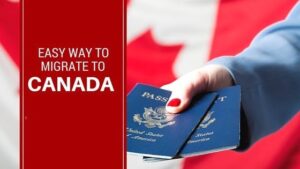Business travel can blur the lines between “work” and “everything else.” Many travelers assume employer coverage protects them fully, until a claim gets denied. This guide explains what employer plans usually cover, where gaps appear, and when adding your own policy makes financial sense.
What Employer Coverage Typically Includes
Common inclusions:
- Emergency assistance and medical benefits (often with limits)
- Some liability coverage related to work activities
- Support services (hotline, coordination, basic claim handling)
Common exclusions and gaps:
- Leisure days or personal extensions
- Family or companion travel
- High‑value electronics (laptops, cameras) beyond low caps
- Pre‑existing conditions or mental health
- Adventure or high‑risk activities outside work scope
Tip: Ask HR for the full policy summary, not just a one‑page overview.
Personal Travel Insurance: Filling the Gaps
A personal policy can add:
- Higher medical limits and better evacuation/repatriation terms
- Trip delay, interruption, and missed connection coverage
- Baggage and electronics protection with realistic limits
- Add‑ons like CFAR, adventure sports, or rental car coverage
If you plan to add vacation days or have valuables, personal coverage can be the difference between a clean payout and a denied claim.
When You Need Both (Real Scenarios)
- Conference + weekend stayover: Employer covers workdays; your policy covers the personal portion.
- High‑value equipment: Employer plan caps may be low; personal coverage can boost limits (check business‑use clauses).
- Remote destinations: Evacuation coverage and provider networks become critical. Doubling up isn’t waste, it’s risk management.
How to Coordinate Policies (Primary vs Secondary)
- Find out which policy is primary for medical and evacuation. Avoid overlaps that slow down claims.
- If your personal policy is secondary, keep documentation from the employer plan to speed reimbursement.
- Keep both assistance numbers handy. In an emergency, call the primary policy first.
Compliance and Documentation
- Confirm what your employer requires (proof of coverage, certificates, travel approvals)
- Keep copies of both policies, COIs, and assistance hotlines
- If you extend your trip, update dates in your personal policy to avoid gaps
Cost Optimization for Frequent Travelers
- Price an annual multi‑trip personal policy if you travel more than twice per year
- Set a deductible you’re comfortable paying out of pocket
- Only add riders (CFAR, sports, gadgets) when you truly need them
Quick Decision Flow (Copy/Paste)
- Do you have leisure days on the trip? If yes → add personal coverage
- Carrying expensive electronics? If yes → check limits, consider a rider
- Traveling to remote areas? If yes → confirm evacuation and hospital networks
- Any pre‑existing conditions? If yes → review stability periods or waiver options
- Multiple trips this year? If yes → compare annual multi‑trip pricing
Coordination Playbook (Primary vs Secondary)
1) Ask HR which policy is primary for medical/evacuation.
2) Align your personal policy as secondary to avoid conflicts.
3) Keep both policy numbers and hotlines in your phone and wallet.
4) In emergencies, contact the primary assistance provider immediately.
Claim Workflow (What To Expect)
Incident → Notify assistance hotline → Gather documents (receipts, reports) → Submit claim forms → Respond to any information requests → Payout or explanation → Appeal if needed.
Real‑World Examples
- Work conference + personal weekend: Employer policy paid urgent care on workdays; personal policy covered a weather delay during the personal extension.
- Damaged laptop: Employer cap was too low; personal rider on electronics covered the remainder.
- Remote site visit: Air evacuation coordinated by employer plan; personal policy reimbursed out‑of‑pocket meds faster.
Templates You Can Reuse
Email to HR (policy details request):
“Hi [Name], I’m traveling on [dates]. Could you share the full travel insurance summary, including medical limits, evacuation, exclusions, and whether the policy is primary? I may add personal coverage for leisure days/equipment. Thanks!”
Email to insurer (COI request):
“Hello, I need an immediate Certificate of Insurance listing my full name, dates, medical coverage, evacuation, and repatriation. Please confirm delivery time and reissue options if dates change.”
Conclusion
Employer coverage is helpful, but it’s rarely complete. For blended work/personal travel, high‑value gear, or complex itineraries, a personal policy closes the gaps and protects you where employer plans don’t.
FAQs
Can employer and personal policies both pay?
Yes, if coordinated. One pays first, the other covers eligible leftovers.
Are leisure days ever covered by employer plans?
Sometimes, but often excluded. Verify in writing.
Do personal policies cover company devices?
Only if allowed. Check “business use” clauses and consider a rider.
Annual multi‑trip vs single‑trip for frequent flyers?
Annual can be cheaper per trip once you travel 3+ times a year.
What documents speed reimbursement?
Boarding passes, itineraries, receipts, incident reports, and proof of delay.

